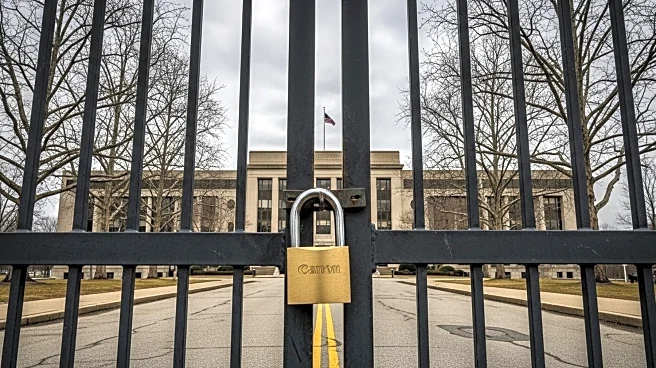What's Happening?
The Trump administration has commenced a significant reduction in the federal workforce as the government shutdown continues. According to Russ Vought, Director of the Office of Management and Budget (OMB), the layoffs, referred to as reductions in force (RIFs), are substantial and permanent. This move follows the administration's directive for federal agencies to submit their RIF plans, targeting programs whose funding has lapsed or is inconsistent with the President's priorities. Approximately 300,000 federal civilian workers are expected to leave their jobs this year as part of efforts to reduce the size of the federal government. The administration has also indicated that federal workers affected by the shutdown may not automatically receive back pay, challenging the conventional understanding of the Government Employee Fair Treatment Act.
Why It's Important?
The workforce reduction is a critical development in the ongoing government shutdown, impacting federal employees and the operations of various government agencies. The decision to implement RIFs rather than temporary furloughs signifies a permanent downsizing of the federal bureaucracy, which could lead to significant disruptions in government services and functions. The move is likely to increase pressure on Senate Democrats to resolve the shutdown, as the administration's stance on back pay could affect up to 750,000 federal workers. This action reflects President Trump's broader agenda to streamline government operations and reduce federal spending.
What's Next?
The administration's legal analysis regarding back pay could escalate tensions with Senate Democrats, potentially influencing negotiations to end the shutdown. The impact of the workforce reduction will be closely monitored by affected agencies and employees, with potential legal challenges from unions and advocacy groups. The broader implications for government services and public policy will depend on the resolution of the shutdown and the administration's ability to implement its workforce reduction plans effectively.










